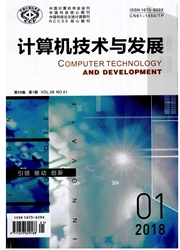

 中文摘要:
中文摘要:
汽车的普及带来的社会问题促进了车载网络的发展,GPSR是应用于节点移动速度快和网络拓扑变化频繁的车载网络的路由协议。该协议会存在路由选择错误和路由中断的问题,易造成数据包丢失,导致网络服务质量低。针对GPSR存在路由投递率低、传输时延大的问题,提出了一种改进的GPSR算法。该算法根据节点的移动速度,预测节点间的距离,并选取移动缓慢的、稳定的节点作为中继节点,保持路由选择的可靠性。理论分析表明,在一定的通信范围内,选择稳定的节点作为中继节点能提高路由投递率,降低传输延时。在NS2仿真平台上,对比两个协议在端到端的延时,数据包接收的成功率、抖动率以及吞吐量等方面的性能。仿真结果表明,改进算法要优于GPSR协议,改进后的算法提高了协议性能,更加符合实际车载网的应用。
 英文摘要:
英文摘要:
Social problems caused by the popularity of cars have promoted the Vehicular Ad Hoc Networks, and routing protocol of GPSR has been used in vehicle network in which the node moves fast and network topology changes frequently. However it easily leads to pack- et loss and low quality of service because routing errors and routing disruptions will exist in the agreement. To solve these problems which include lower delivery rate and large transmission delay, an improved GPSR algorithm has been proposed in which the relay node is cho- sen from the nodes that move slower and stably according to the moving speed of nodes and the distance between two nodes for maintai- ning reliability of route selection. Theoretical analyses show that the stable node chosen as a relay node can promote the routing delivery rate and reduce transmission delay within a certain range communications. Comparisons of end to end delay, delivery ratio and jitter rate between both the protocols on NS2 simulation platform have been conducted. Simulation results show that the improved algorithm is bet- ter than the GPSR and performance of the GPSR protocol has been enhanced more suitable for vehicle network.
 同期刊论文项目
同期刊论文项目
 同项目期刊论文
同项目期刊论文
 期刊信息
期刊信息
